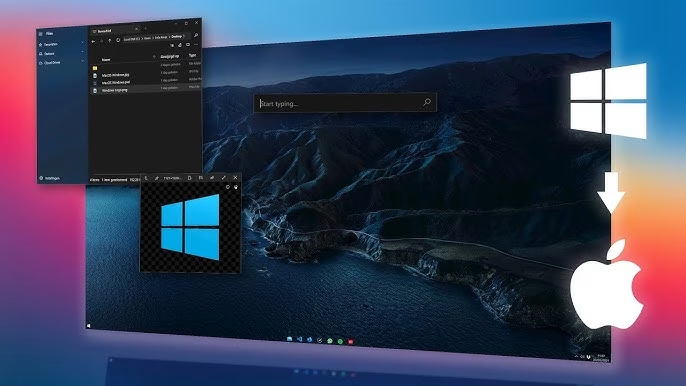For decades, Microsoft’s Windows and Apple’s macOS have represented two distinct design philosophies. But recent leaks surrounding Windows 12 suggest that the gap between them may be narrowing. From interface tweaks to deeper AI integration, Microsoft appears to be pushing Windows toward a cleaner, more Apple-inspired experience—while still charting its own course in how operating systems should evolve.
1. A Familiar Face: macOS-Inspired Interface
One of the most talked-about Windows 12 leaks is its redesigned interface:
Floating Taskbar:** Instead of being docked firmly to the bottom, the taskbar appears to “float” above the edge of the screen, very similar to macOS’s Dock.
Top Bar System Tray:** Early builds suggest a permanent bar at the top of the screen, housing system icons, search, and widgets. This mirrors macOS’s menu bar.
Clean & Modular Layout:** The design philosophy emphasizes minimalism, transparency, and rounded edges—elements Apple has perfected over the years.
These visual changes suggest Microsoft is aiming to give Windows 12 a more modern, fluid look while appealing to users who admire macOS’s simplicity.
2. The Bigger Shift: AI at the Core
Design aside, the biggest transformation in Windows 12 isn’t about looks—it’s about intelligence. Microsoft has signaled that the next Windows will be **AI-first**:
Context-Aware Computing:** The OS will predict user intent, such as surfacing documents you recently discussed or suggesting actions before you ask.
Voice & Multimodal Control:** Instead of just clicks, Windows 12 may let you say, “Find the file Sarah emailed yesterday,” and instantly retrieve it.
Copilot Everywhere:** Microsoft’s Copilot AI assistant will be more deeply integrated, acting less like an app and more like a built-in partner that works across the entire OS.
Hardware-Accelerated AI:** With new Neural Processing Units (NPUs) entering modern laptops, Windows 12 could offload AI tasks to specialized hardware for smoother, faster performance.
This AI-driven vision sets Windows 12 apart from macOS, which—while polished—remains more traditional in how users interact with it.
3. Modular and Future-Proof
Another expected feature of Windows 12 is its **modular architecture**:
* Components like File Explorer, Start Menu, and Settings may be independently updated, allowing Microsoft to roll out fixes and improvements faster.
* The modular approach could make the OS lighter on low-power devices while still scaling up for high-end PCs.
* Energy efficiency, security, and ARM-optimized performance are also rumored to be core goals.
Some reports have even suggested Microsoft may experiment with a subscription model for Windows 12, though this remains speculation.
4. Release Timeline & Hardware Requirements
Launch Window:** Current projections place Windows 12’s release in late 2025 or beyond, aligning with Microsoft’s typical product cycle.
Hardware Demands:** Expect higher requirements than Windows 11. Minimums may include TPM 2.0, UEFI/Secure Boot, 8 GB RAM, and newer CPUs (such as Intel 10th Gen or AMD Ryzen 5000 and up). Devices with AI-capable hardware will likely see the biggest benefits.
5. Is Windows 12 Becoming More Like macOS?
In many ways—yes. The floating taskbar, top system tray, and minimalist visuals clearly borrow from Apple’s design language. The inspiration is hard to miss.
But in other ways—no. macOS is still a traditional OS at its core, while Microsoft seems intent on pushing Windows into an AI-first, voice-driven, context-aware era. Where Apple emphasizes stability and polish, Microsoft is betting on ambient AI and adaptive workflows.
Conclusion
Windows 12 appears to be a **blend of macOS-inspired elegance and Microsoft’s AI-driven future vision**. The interface tweaks may attract those who admire Apple’s clean design, but the deeper story lies in Microsoft’s ambition to reinvent how users interact with their PCs—making the OS not just a platform, but an intelligent assistant.
If the leaks hold true, Windows 12 could mark the boldest redesign since Windows 95, bridging aesthetics with intelligence. The real question is whether users will embrace this shift—or long for the familiarity of older Windows versions.



